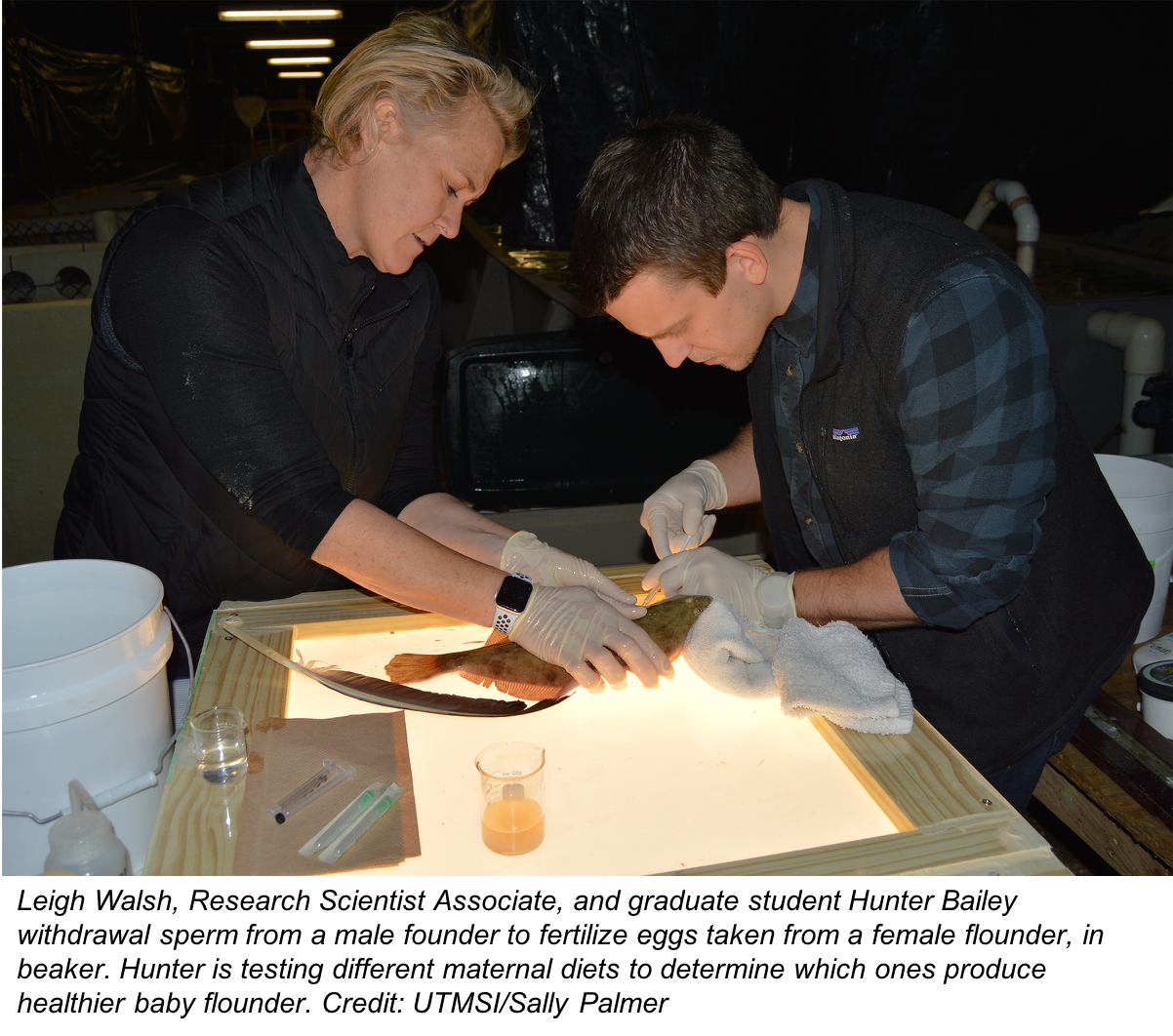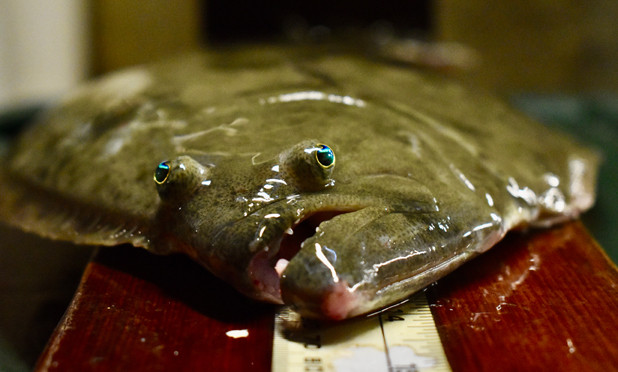 Just like humans, baby flounder need nutrients and specifically omega-3 fatty acids to thrive after birth. Fisheries researchers at the University of Texas Marine Science Institute in Port Aransas are working with Texas Parks and Wildlife Department to understand what is the best fish diet to feed the mother flounder. Instead of a prenatal pill, researchers are testing whether fish, squid, shrimp or a combination of those produces the healthiest baby flounder.
Just like humans, baby flounder need nutrients and specifically omega-3 fatty acids to thrive after birth. Fisheries researchers at the University of Texas Marine Science Institute in Port Aransas are working with Texas Parks and Wildlife Department to understand what is the best fish diet to feed the mother flounder. Instead of a prenatal pill, researchers are testing whether fish, squid, shrimp or a combination of those produces the healthiest baby flounder.
Southern flounder are an important recreational sport fish along the Texas coast, and Texas Parks and Wildlife Department is trying to protect and boost natural populations through stock enhancement. Currently they grow and release thousands of juvenile flounders into local bay systems every year. University researchers are striving to maximize the success of the released flounder by understanding of how maternal diets impact egg quality and the viability of the juveniles that will be released. Specifically, researchers are determining whether different diets of the mothers change how well the youngsters can evade predators and forage for food. Initial test results indicate that a healthy maternal diet rich in omega-3 fatty acids can produce baby flounder that are faster and smarter.
Currently, Dr. Lee Fuiman and graduate student Hunter Bailey are testing that hypothesis through their collaboration with Texas Parks and Wildlife Department (TPWD). They are measuring nutrient and fatty acid content in eggs spawned from females at TPWD’s hatcheries that are fed shrimp and squid, against eggs spawned by females at the University’s Fisheries and Mariculture Laboratory that were fed shrimp or sardines, which typically have very different fatty acid profiles. Once the eggs hatch, the researchers will grow the larvae and then measure their swimming performance and their responses to a simulated predator.
Texas Parks and Wildlife Department is investing heavily in hatchery production of flounder for stock enhancement. Results of this project should help their hatcheries improve the quality and survival of the flounder they release into the wild, making the stock enhancement efforts more successful.
This research is supported by Texas Parks and Wildlife Department and the United States Fish and Wildlife Service.
###
The views and conclusions in this press release are those of the authors and should not be interpreted as representing the opinions or policies of the U.S. Government or the National Fish and Wildlife Foundation and its funding sources. Mention of trade names or commercial products does not constitute their endorsement by the U.S. Government, or the National Fish and Wildlife Foundation or its funding sources.









